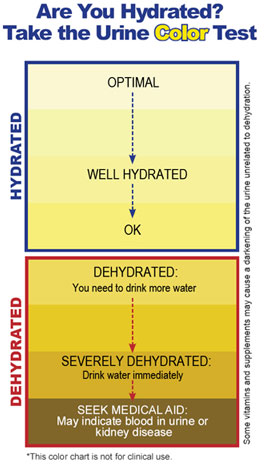
Plastic Bottles 101 - Page 2
How Much Do You Know about Plastic Bottles?

- #3 PVC (polyvinyl chloride)—This type of plastics contains di-2-ethylhexyl phthalate (DEHP), an endocrine disruptor and a probably human carcinogen. Unfortunately, water pipes carrying municipal tap water into most American homes are made with PVC. Food wrappers (such as cling wrap), some squeeze bottles, shampoo bottles, cooking-oil jars, peanut-butter jars, detergent and window cleaner bottles, shower curtains, medical tubing, automotive parts (including the plastics panels that line the inside of cars), and most pipings and sidings in modern construction are made of PVC. Health advocates and researchers have described PVC as among the most dangerous and toxic consumer products ever manufactured. PVC will leak plasticizer and softeners DEHP and BBzP (buty benzyl phthalate) into food and water. Both DEHP and BBzP are endocrine disruptors that can mimic human estrogen; they have been linked to asthma and allergies in children and certain types of cancers.
- #4 LDPE (low-density polyethylene)—This type of plastics is characterized by clarity and flexibility. It is often used to make bottles and bags that require extra flexibility (such as six-pack soda-can rings, clear produce bags and grocery bags, garbage bags, shrink-and-stretch film, squeezable bottles of mustard, and honey, and coating for milk cartons).
- #5 PP (polypropylene)—Plastics that have high tensile strength, making them ideal in the manufacturing of caps and lids that hold tightly onto threaded openings. Consumers often see this category of plastics in ketchup and syrup bottles, yogurt containers, medicine bottles, syrup bottles (e.g., maple and cough syrup), straws, Rubbermaid food containers, and other opaque plastic containers.
- #6 PS (polystyrene)—Commonly used in Styrofoam containers (such as egg cartons, disposable cups and bowls, take-out food containers, plastic cutlery, and CD cases, this type of plastic may leach styrene, a possible endocrine disruptor, and a cancer trigger, into food and water. Long-term exposure to styrene may trigger potential reproductive and developmental problems and people may suffer negative brain and nervous system effects. When oily foods are heated in polystyrene containers, styrene then leaches in large amounts from the containers into food.
- #7 OTHER (containing Bisphenol-A, or BPA)—This category includes the controversial sports water bottles sold by Nalgene, which are the hard, clear, colorful, light-weight, and unbreakable polycarbonate plastic bottles. In May 2008, the Canadian government restricted this type of plastic used in baby bottles. BPA is an ingredient in the production of polycarbonate plastics and as the epoxy resins that line the inside of most food and beverage cans. In addition to being used in food and water containers, BPA is also used in dental prosthetics and sealants. (Consumers take note: Food cans contain a plastic liner made with BPA, which has been known to leach into canned food. BPA has been shown to mimic human hormone, cause precancerous tumors, trigger urinary tract problems, a suspect in triggering breast cancer and prostate cancer, and accelerate aging by causing early puberty.) Worldwide 6.6 billion pounds of BPA is produced annually.
 |  |  |  |  |  |  |
What's this?
Check "Remember Me" to access your shopping cart on this computer even if you are not signed in.

